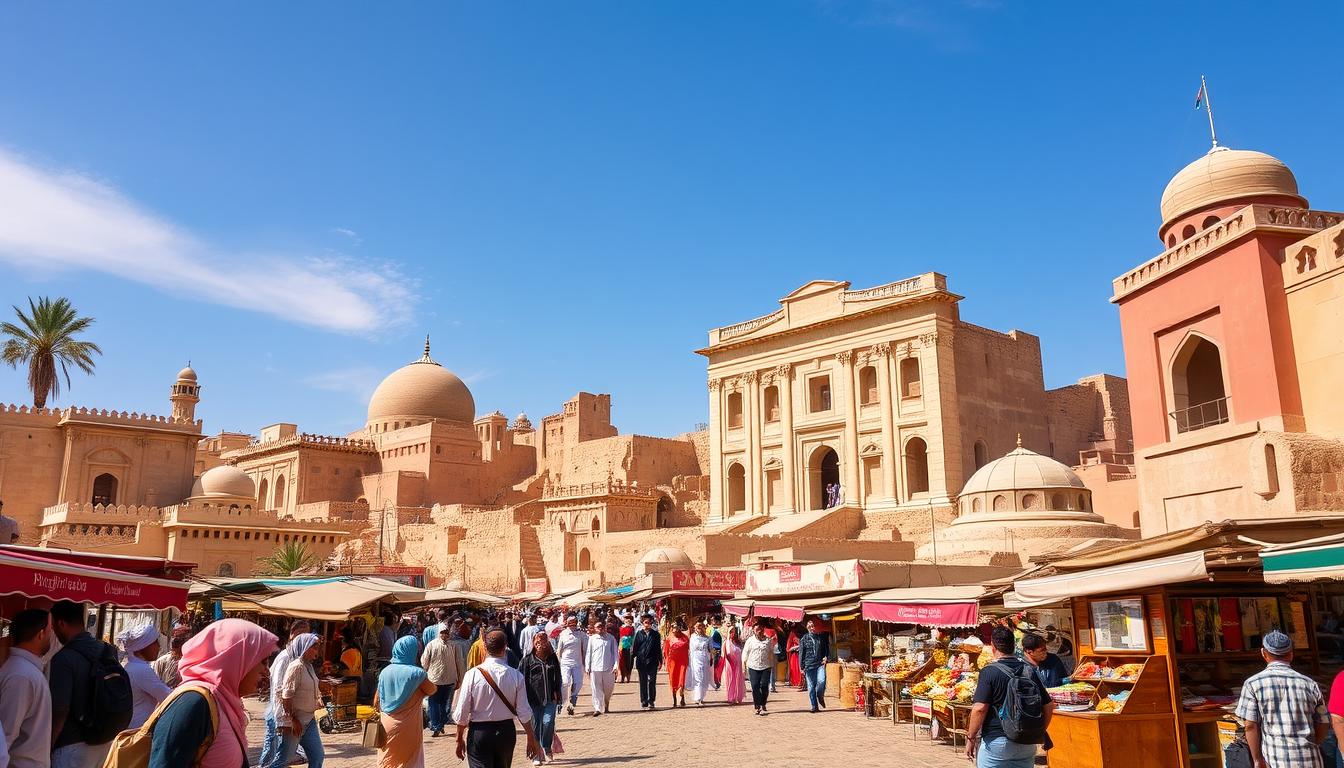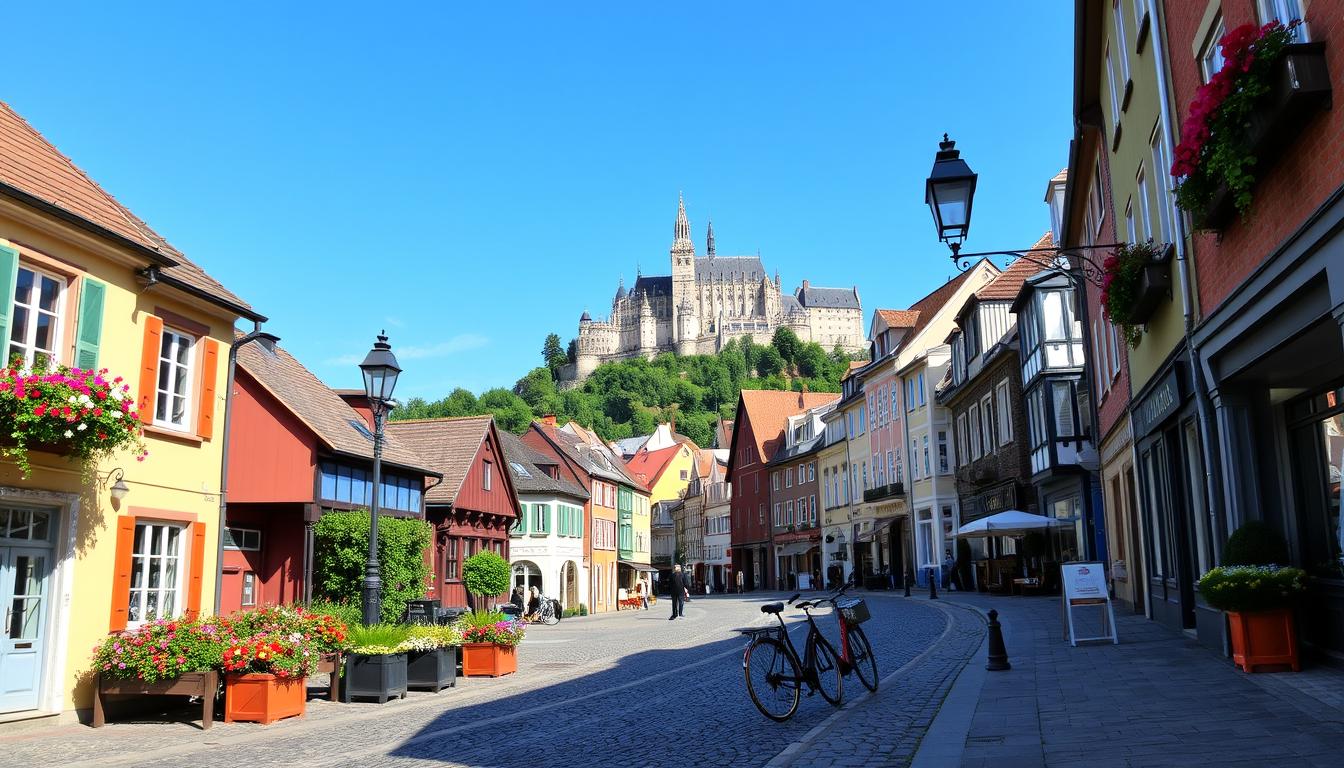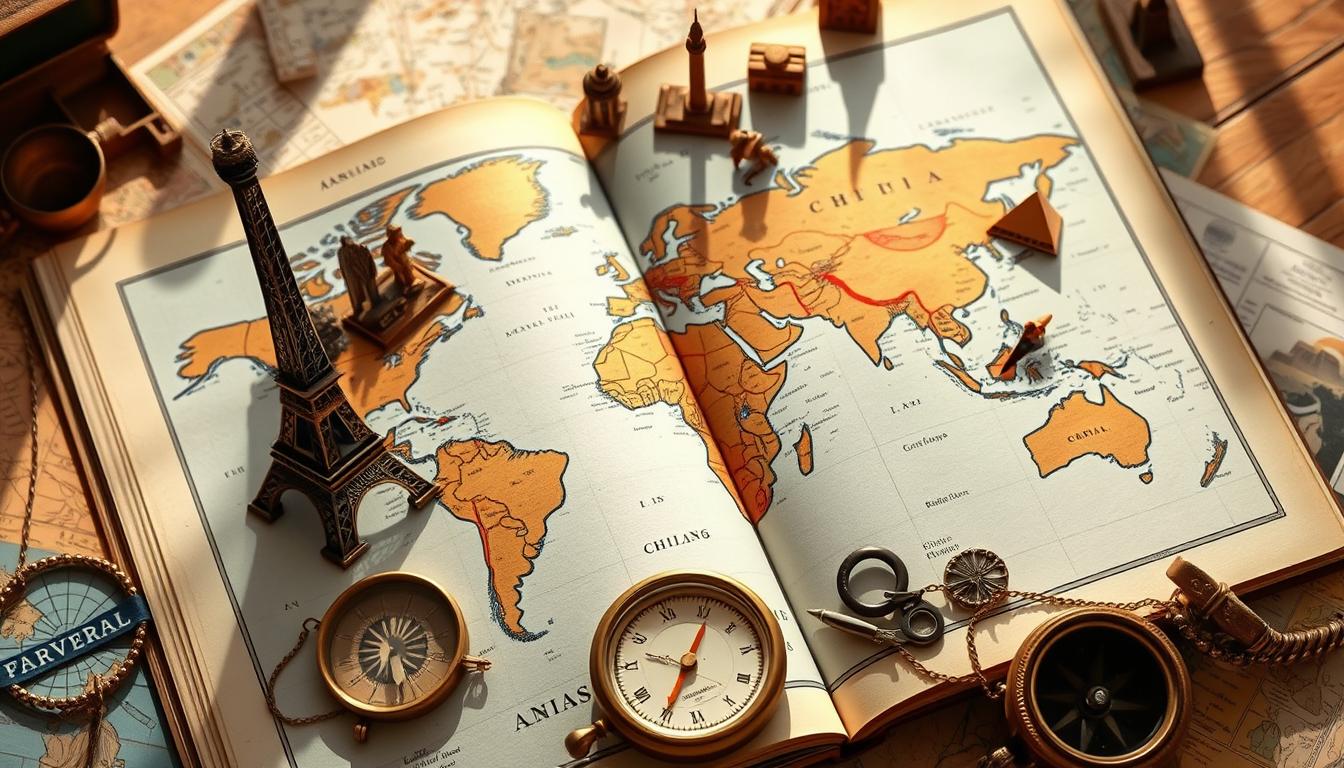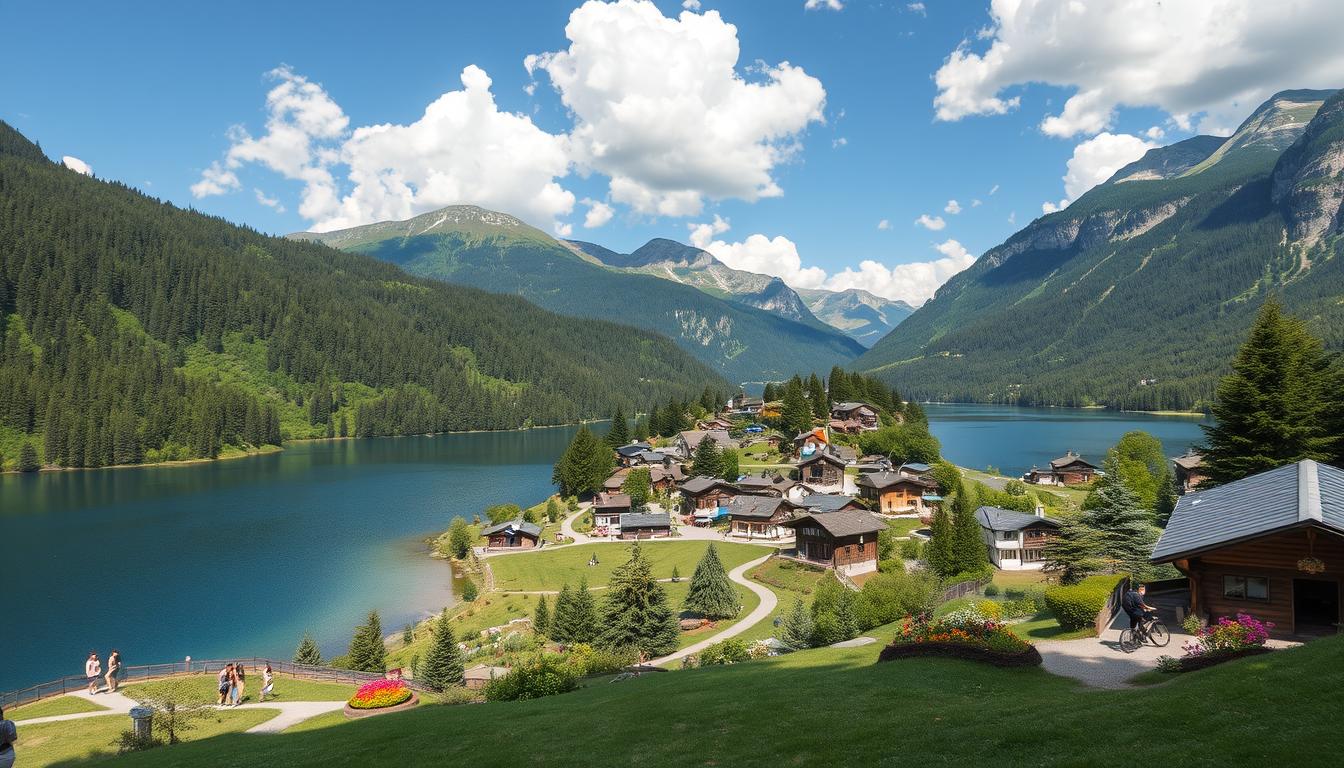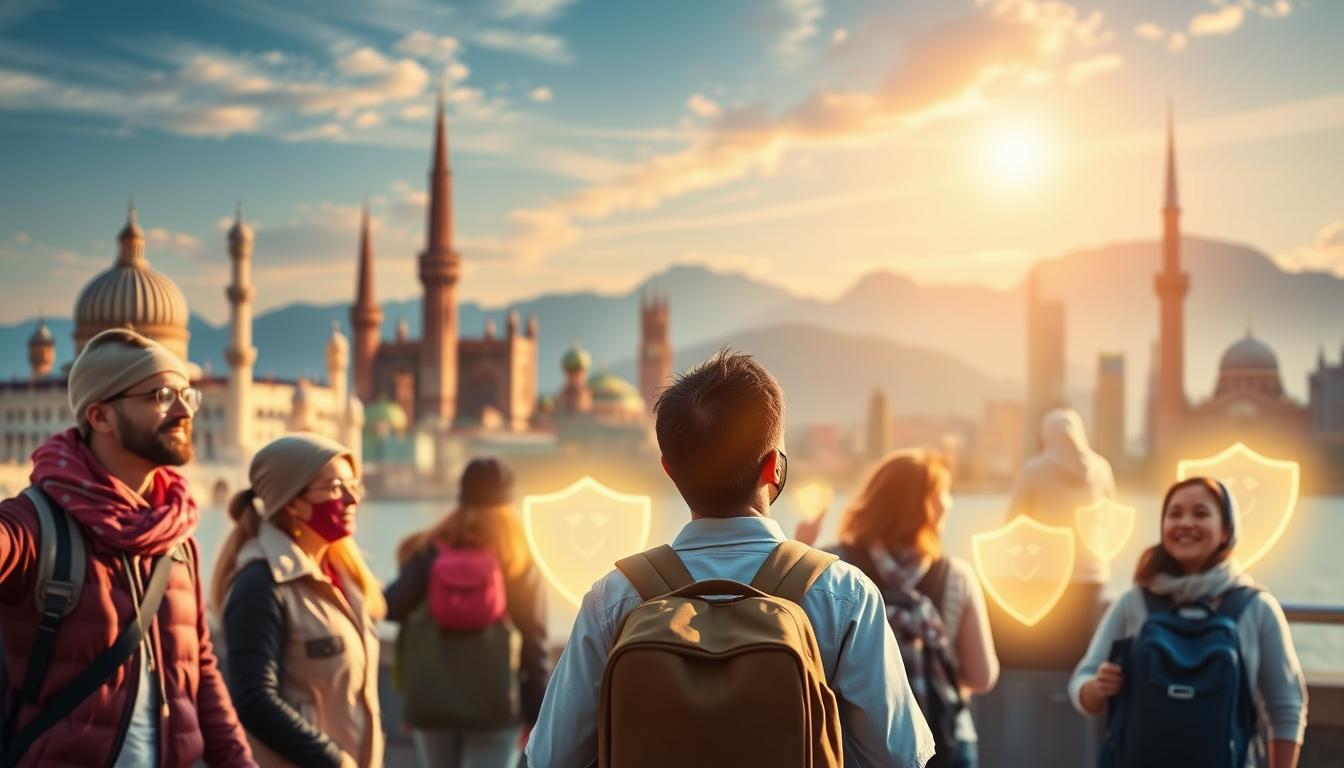Booking a ticket to the Middle East filled me with both excitement and worry. The area’s history, cultures, and landscapes were calling to me. Yet, safety concerns had always held me back.
After diving into the latest travel advisories, I saw the Middle East in a new light. It’s a place full of promise for those who are curious and prepared.
Key Takeaways
- The Middle East has many countries, each with its own safety level for tourists.
- Places like Syria, Yemen, and parts of Iraq are risky due to conflicts and terrorism.
- But, countries like the UAE, Saudi Arabia, and Oman are safe, with low crime and strong security.
- Being prepared, aware of the culture, and proactive about safety is crucial in the Middle East.
- Traveling with local experts and reputable tour operators can make your trip safer and more enjoyable.
Unveiling the Wonders of the Middle East
The Middle East is a fascinating place. It has ancient ruins and modern wonders. Places like Petra in Jordan and Dubai in the United Arab Emirates are must-sees. They offer a mix of history and culture for travelers.
From Ancient Civilizations to Modern Marvels
Explore the Middle East’s rich history. See the remains of old empires and kingdoms. Visit the AlUla Valley in Saudi Arabia to learn about Dadan and Lihyan civilizations.
See the Nabataean tombs in Hegra, a UNESCO site. Also, check out the AlUla Old Town ruins.
But the Middle East is not just about the past. It also has modern wonders. Dubai’s skyscrapers and buildings like Maraya show the region’s love for innovation.
Experiencing the Diverse Cultures and Traditions
Dive into the Middle East’s vibrant culture. Walk through Cairo’s souks and smell the food. Oman’s natural beauty and traditions are also worth exploring.
Learn about Ramadan and Sharia law. Respect local customs and dress codes for a meaningful trip.
| Destination | Highlights |
|---|---|
| AlUla, Saudi Arabia |
|
| Jordan |
|
Discover the Middle East destinations for a unique experience. See ancient ruins and modern marvels. It’s a chance to learn about the diverse traditions of this amazing region.
Is it safe to travel to the Middle East as a tourist?
Traveling to the Middle East can raise safety concerns for many tourists. The area’s complex politics and terrorism threats are big worries. Yet, it’s key to know the Middle East is big and varied, with different safety levels in each country and area.
Addressing Common Concerns and Misconceptions
Many think the whole Middle East is unsafe for visitors. But, most of it is safe if you’re careful and respect local ways. The Middle East travel safety depends on where you go, when, and how well you’re prepared.
Concerns about terrorism are common. But, the risk is often made bigger by the media. Most Middle Eastern countries have strong security to keep tourists safe.
Some places, like the Northern and Middle Sinai Peninsula in Egypt, are too risky for tourists. The U.S. government warns against these areas because of attacks. Here, political instability and terrorism threats are real, so it’s best to stay away.
Even with risks, the Middle East can be a great place to visit. It offers rich history, culture, and natural beauty for those who are careful and open-minded.
| Country | Travel Advisory Level | Key Concerns |
|---|---|---|
| Egypt | Level 2: Exercise Increased Caution | Occasional attacks on security forces and civilians in the Northern and Middle Sinai Peninsula, terrorist threats in urban areas |
| Israel | Level 2: Exercise Increased Caution | Terrorism and civil unrest, especially near the Lebanese and Syrian borders |
| West Bank | Level 3: Reconsider Travel | Terrorism and civil unrest |
| Gaza | Level 4: Do Not Travel | Terrorism and armed conflict |
Always check the latest travel advisories before visiting the Middle East. With the right preparation, you can enjoy its culture and beauty while staying safe.
Planning Your Middle East Adventure
Planning a memorable trip to the Middle East is all about careful planning. Timing your visit is crucial. Spring and fall are the best times to go, with pleasant weather.
Best Times to Visit for Optimal Experiences
The Middle East has varied climates, from hot summers to cool winters. To enjoy your trip, consider these seasonal highlights:
- Spring (March-May): Enjoy mild temperatures, beautiful flowers, and fewer people in places like Dubai, Oman, and Jordan.
- Fall (September-November): Experience the region’s nice weather and fewer tourists in Egypt, Turkey, and Lebanon.
Essential Travel Documents and Preparations
Before your Middle East adventure, make sure you have the right travel documents. You’ll need a valid passport and any visas for your destinations. Also, learn about local customs and dress codes to respect the culture.
Don’t forget to plan your transportation, book your stay, and get travel insurance. Good planning reduces stress and makes your trip more enjoyable.
| Travel Document | Requirement |
|---|---|
| Passport | Valid for at least 6 months beyond your travel dates |
| Visa | Required for most Middle East countries; check specific requirements |
| Travel Insurance | Highly recommended to cover medical emergencies and trip interruptions |
“Careful planning is the key to a safe and enriching Middle East adventure. Take the time to research the best times to visit and ensure you have all the necessary travel documents and preparations in place.”
Cultural Etiquette and Dress Code
Traveling in the Middle East means learning about local customs and dress codes. Knowing these can help you avoid misunderstandings and enjoy your trip more.
Respecting Local Customs and Traditions
Dressing conservatively is key when visiting the Middle East. Women should cover their arms, legs, and hair. Men should wear long pants and shirts with sleeves. In places like Saudi Arabia, women must also cover their heads and faces.
It’s best to avoid showing affection in public. Greetings should be formal and respectful. Remember to remove your shoes when entering mosques and be aware of prayer times.
| Country | Dress Code Regulations | Customs and Traditions |
|---|---|---|
| Uganda | The ‘Miniskirt ban’ prohibits women from revealing their thighs, breasts, and buttocks, leading to the enforcement of conservative dress codes for both men and women. | Adhering to the dress code is crucial to avoid legal issues. |
| North Korea | Blue jeans are banned for locals due to their perceived association with U.S. imperialism. Tight-fitting trousers are also prohibited. Tourists can wear blue jeans, except when visiting specific sites, in which case black trousers are expected. | Dress code regulations are strictly enforced, reflecting the country’s cultural values and political ideology. |
| Saudi Arabia | Modesty in dress is strictly enforced, prohibiting exposed skin for women, including arms, legs, and head. This is relaxed for female tourists, allowing the face and head to be exposed, but western-influenced clothes are prohibited for both sexes. | Respecting the country’s conservative Islamic traditions is crucial for both locals and visitors. |
By following the local dress code and etiquette, you show respect for Middle Eastern traditions. This makes your trip more meaningful and enjoyable.
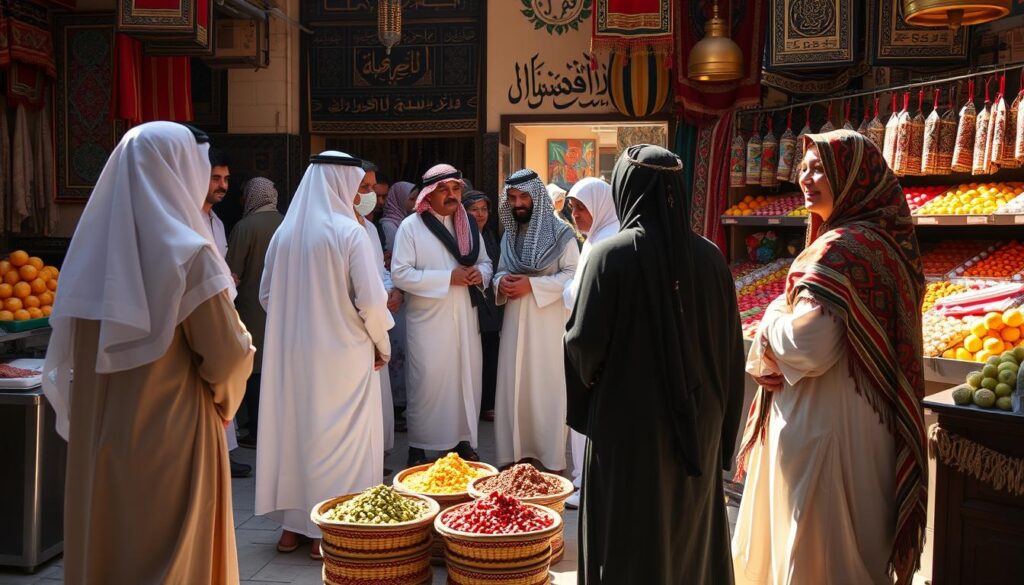
Top Destinations for Solo Travelers
The Middle East has many exciting places for solo travelers. Turkey and Oman are two top picks. They offer unique experiences and are very safe for adventurers traveling alone.
Turkey: A Blend of East and West
Turkey mixes Eastern and Western cultures beautifully. It has a great tourism setup and friendly locals. It’s a safe spot for solo travelers looking to dive into culture and see beautiful views.
Places like Istanbul and Cappadocia are full of wonders. They attract solo explorers from all over.
Oman: Serene Natural Beauty and Hospitality
Oman is known for its calm nature, history, and welcoming people. It’s perfect for those wanting a traditional Middle Eastern trip. With low crime and a focus on hospitality, it’s a safe haven for solo travelers.
Visitors can enjoy stunning wadis, ancient forts, and lively souks. It’s a place where solo adventurers can feel at home.
| Destination | Safety Ranking | Top Attractions |
|---|---|---|
| Turkey | #60 on the Global Peace Index |
|
| Oman | #64 on the Global Peace Index |
|
“Oman is considered a safe country for solo female travelers, where they do not need to worry about safety concerns.”
Navigating the Middle East Safely
Exploring the Middle East is exciting but needs careful planning for safety. The area is full of cultural wonders and stunning views. To travel safely, you need to prepare well and use local guides.
Local Guides and Tours for Enhanced Security
Local guides or tours can make your trip safer and more fun. They know the local ways, language, and safety tips. They can show you places you might miss and keep you out of danger.
Using local guides is more than just safety. It’s a chance to really get to know the Middle East. They share stories, introduce you to real experiences, and make your visit meaningful.
Staying Vigilant and Prepared
Being aware and prepared is key to a safe trip. Watch your surroundings, keep your things safe, and know emergency numbers. Always be ready to change your plans if needed.
Do your homework before traveling. Check the latest travel warnings from places like the U.S. Department of State. This way, you can enjoy the Middle East’s beauty while staying safe.
“Traveling to the Middle East requires a delicate balance of cultural immersion and personal security. With the right preparation and guidance, you can unlock the region’s enchanting treasures while ensuring your journey is both enriching and safe.”
The Middle East is a mix of old cultures, diverse people, and amazing views. With local guides and a careful approach, you can explore safely. This will make your trip unforgettable and life-changing.
Immersive Experiences and Adventures
The Middle East is full of exciting experiences and adventures. Travelers can explore the region’s rich heritage and stunning landscapes. From thrilling desert safaris in Oman and the UAE to ancient sites like Petra and Egypt’s pyramids, there’s much to see.
Exploring the Desert Wonderland
Desert safaris in the Middle East are a thrilling adventure. Ride through Oman’s Wahiba Sands or the UAE’s Rub’ al Khali desert. Enjoy the rush of dune bashing and stunning sunsets.
These trips let you connect with the Bedouin culture. You’ll see the vast, untouched beauty of the Middle East’s deserts.
Uncovering Ancient Treasures
The Middle East is filled with ancient ruins and wonders. Visit the legendary city of Petra in Jordan or Egypt’s iconic pyramids and Sphinx. These sites show the region’s history and ancient civilizations’ ingenuity.
| Destination | Top Attractions | Recommended Activities |
|---|---|---|
| Oman | Wahiba Sands, Jebel Akhdar Mountains, Nizwa Souq | Desert safaris, wadi hiking, traditional Omani cuisine |
| Jordan | Petra, Wadi Rum, Dead Sea | Exploring ancient ruins, hot air balloon rides, floating in the Dead Sea |
| Egypt | Pyramids of Giza, Nile River cruises, Luxor’s Valley of the Kings | Visiting archaeological sites, Nile River cruises, exploring ancient temples |
Travelers to the Middle East can make unforgettable memories. They’ll learn about the region’s history, cultures, and natural wonders.
Travel Essentials and Tips
Getting ready for a trip to the Middle East means packing the right stuff. You’ll need clothes, personal care items, and important documents. It’s also smart to look into how to get around and where to stay. Planning ahead can make your trip better.
Packing for Your Middle East Journey
Think about the weather and local customs when packing for the Middle East. Make sure your passport is valid for at least six months from your trip start date. Also, check if your prescription medicines are okay to bring, as some might be banned.
- Carry earplugs for sleeping due to the early morning call to prayer
- Dress modestly, with long trousers and shirts for men and non-transparent, long-sleeved dresses for women, as swimsuits are only allowed at pools or on beaches
- Pack essential toiletries like toothbrushes and toothpaste, as some hotels may not provide them automatically
- Bring voltage converters and universal adapters due to varying electricity sockets in different Middle Eastern countries
- Wear sunscreen and pack moisturizing nasal drops and hand cream to combat the dry climate
Currency, Transportation, and Accommodations
Learn about the local currency and where to find ATMs. Each country has its own rules for money, so it’s good to know.
There are many ways to get around the Middle East. Look into buses, taxis, private tours, and car rentals. This will help you travel smoothly.
Accommodations vary from cheap hostels to fancy hotels. Think about what you want and can afford. Also, remember to respect local customs and dress codes.
| Destination | Transportation | Accommodations |
|---|---|---|
| Dubai, UAE | Metro, Taxis, Rental Cars | Luxury Hotels, Serviced Apartments |
| Istanbul, Turkey | Trams, Buses, Ferries | Boutique Hotels, Airbnbs |
| Amman, Jordan | Taxis, Private Tours, Rental Cars | Mid-Range Hotels, Hostels |

“Advance planning for your Middle East journey is key to ensuring a smooth and enjoyable experience.”
Conclusion
Traveling in the Middle East can be rewarding and eye-opening. It needs careful planning and a respect for local customs. By addressing safety concerns and practicing cultural awareness, you can enjoy ancient wonders and natural beauty.
The Middle East has faced negative media, but places like Iran and Jordan are gaining popularity. By respecting local customs and following safety guidelines, you can confidently explore. This way, you’ll create unforgettable memories.
The Middle East offers a chance to experience history, nature, and friendly locals. With the right preparation and an open mind, your trip can be transformative. It will be a journey filled with discovery and joy.

